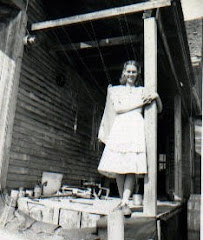As reported in the Bangor Daily News on March 20-21, 1971
by Bob Taylor, NEWS City Desk
Effie MacDonald’s killer is still at large.
Just six years ago, March 19, 1865, the beaten and ravaged body of the 54-year-old chambermaid was found in a third-floor room at the Bangor House.
Strangled With Stocking
She had been strangled with a nylon stocking.
The murder touched off one of the most intensive investigations in Bangor police annals. Investigators worked around the clock for several weeks, asking thousands of questions and chasing down countless microscopic clues.
Six years later, the crime is still officially unsolved and the killer remains free.
Unofficially, police are still smarting under a legal stalemate. They think they know, beyond any reasonable doubt, the identity of the murderer.
They are equally convinced, however, that their evidence would never stand up in a court of law.
Friendly And Popular
Effie MacDonald, quiet and not especially attractive, was an unlikely victim of a crime of passion. A divorcee, she lived alone and had worked for seven years at the Bangor House, where other employees described her as friendly and popular.
The body was found in an unoccupied room by another chambermaid about 15 minutes before what would have been the normal end to the victim’s work day.
Hotel records showed that the room had not been rented for two days and would not have required any maid service.
The partially nude body was found on the floor. Most of her clothing had been ripped off and the stocking was wrapped tightly four times around her neck.
Circumstances of the crime were strongly similar to the then-unsolved rash of sex murders in the Boston area credited to the “Boston Strangler.”
Assistance Offered
In fact, two detectives from the special Massachusetts “Strangler Squad” sped to Bangor to examine the body and offer any possible assistance. They agreed that the overall circumstances were similar to the Boston murders, but detected important discrepancies that soon convinced them that the crime was not the work of the “Strangler.”
Bangor police were left with the task of tracing down the killer with virtually no major clues. A check of the victim’s personal life offered no leads.
Her landlady said that she had been divorced for nine years and lived a solitary existence in a housekeeping room not far from Bangor police headquarters. She didn’t go out much, the landlady recalled and her visitors were limited to mostly to relatives. She spent most of her non-working hours alone in her room, watching television or listening to the radio.
Over 100 Questioned
Police started by checking out the other hotel guests. Within four days they had questioned more than 100 people and compiled hundreds of pages of typewritten statements.
Detective Capt. Clifton E. Sloane, who has since retired from the police department, probably remembers the case better than anyone. Sloan still lives with a burning desire to solve the case and bring the killer to justice.
Sloane worked on seven murder cases during his career as a police detective. Only the MacDonald murder still has loose ends.
Within a few days police had narrowed the list of possible suspects to a handful and finally to one.
They reconstructed the crime in light of known facts and went over the evidence dozens of times. They became convinced that a male guest at the hotel had to be the murderer.
Proof Another Matter
Proving it would be another matter. The suspect quickly obtained the services of a lawyer and refused to answer questions. The fragile web of facts, unsupported by witnesses or important physical evidence would melt under the weight of legal doubt in a courtroom.
Sloane believed that he had enough evidence to obtain an indictment from a grand jury but finally decided against it. If the suspect should be arrested and freed after a superior court trial he would be forever beyond the reach of the law.
Police decided to wait and hope for a break. That was six years ago and the final solution to the case seems further away than ever.
Might Make A Slip
Sloane admits that there isn’t much chance that new evidence will come to light at this late date. However, he still believes that the killer could make a slip.
Sloane’s theory is that the crime was the result of an emotional outburst. He believes that the killer attacked the chambermaid because he was dissatisfied with the room.
If the killer is truly a person given to such emotional tantrums, Sloan theorizes, he could “blow his top” at any minute and commit another serious crime. Perhaps, next time, he wouldn’t be so lucky.
On the other hand, Sloane believes, six years of living with the crime might weigh heavily upon the killer’s conscience. There may come a time when he will want to confess.
In any event, the retired veteran of more than 20 years of police work is still hoping . . . and waiting!
------
SOURCE: Bangor Daily News, Bangor, Maine, March 20, 1971
Saturday, November 24, 2007
Subscribe to:
Post Comments (Atom)



.jpg)
.jpg)



.jpg)
1 comment:
Has it ever been revealed what room numver Effie was found in? If not, does anyone know the room numbering layout of the Bangor House at that time? Specifically, what number rooms were on the third floor? 300's?
Post a Comment